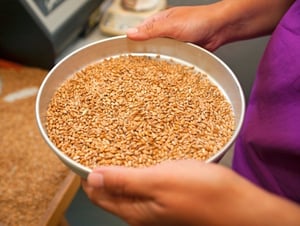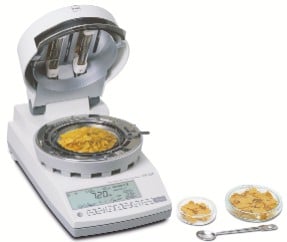 If you are serious about woodworking, you know the importance of properly dried wood. In order to be usable for a construction project, wood must be kiln or air-dried to a moisture level of 19%. But wood that is intended for indoor use, that is, wood intended to be used for woodworking, must have a moisture content level that is less than half that amount, at only 9%.
If you are serious about woodworking, you know the importance of properly dried wood. In order to be usable for a construction project, wood must be kiln or air-dried to a moisture level of 19%. But wood that is intended for indoor use, that is, wood intended to be used for woodworking, must have a moisture content level that is less than half that amount, at only 9%.
Why is this important? In everything you do, your overall finished product depends on precision, from how the wood is hand turned to the way it is joined together, and the amount of moisture in the product is no exception. With a craft that can be as hard to master and ever-changing as woodworking, knowing the moisture content of your wood can make a huge difference in your end results.
Humidity and Moisture
Even post-harvest, wood remains responsive to environmental conditions. Fluctuations in ambient humidity cause continuous expansion and contraction; this natural movement is influenced not only by relative humidity but also by the way the lumber is cut. Achieving and maintaining appropriate moisture levels for each project minimizes the risk of significant dimensional changes once the product is in service. Ideally, wood would be acclimated in conditions that closely match its end-use environment, minimizing subsequent movement after installation.
Achieving stable moisture content through workspace climate control, by regulating temperature or humidity, can be prohibitively expensive and is rarely an exact science. More practical and reliable is the routine monitoring of wood using an accurate moisture meter, allowing craftsmen to confirm suitability before each stage of production.
The Nature of Woodworking
In order to build furniture or lay floors that last for generations, each project is created with joinery that allows for “seasonal movement,” that is, for the wood to expand and contract with the weather. If you mill wood before it is properly dried or lay hardwood floors that have too high a moisture content, as soon as the weather or humidity shifts, the wood will contract and be too small; joints won’t fit properly, floorboards will shift or creak. Use wood that is too dry and you are subject to warping once the humidity spikes. Regularly checking moisture levels prevents either of these two extremes from happening.
If used at the incorrect time, a dresser made from wood with too much moisture can shrink from 24 inches across to 23.65 inches with only a 4% drop in relative humidity, losing ⅜ of an inch! As you can see, taking correct moisture readings is key to a successful finished product.
Reliable Moisture Measurement
To support high standards in woodworking, a dependable moisture meter is indispensable. Kett’s instant wood moisture meters offer non-destructive testing with no risk of pinhole damage or complex calibration procedures. Our instruments are engineered for accuracy and ease of use, allowing users to select the exact wood species for tailored and precise readings. This level of control removes uncertainty from the measurement process, empowering craftsmen to make informed decisions at every stage.
Achieving consistent quality in woodworking starts with selecting the right tools. If precision is a priority, implementing regular moisture checks with a purpose-built moisture meter is a practical step forward. Explore our selection of wood moisture meters to see how they can elevate your approach, whether in cabinetry, carpentry, flooring, or woodturning. Trusted measurement is integral to superior results.
If you have questions about moisture measurement for your projects or the impact of wood moisture content, our experts are available to assist. Contact us today!


